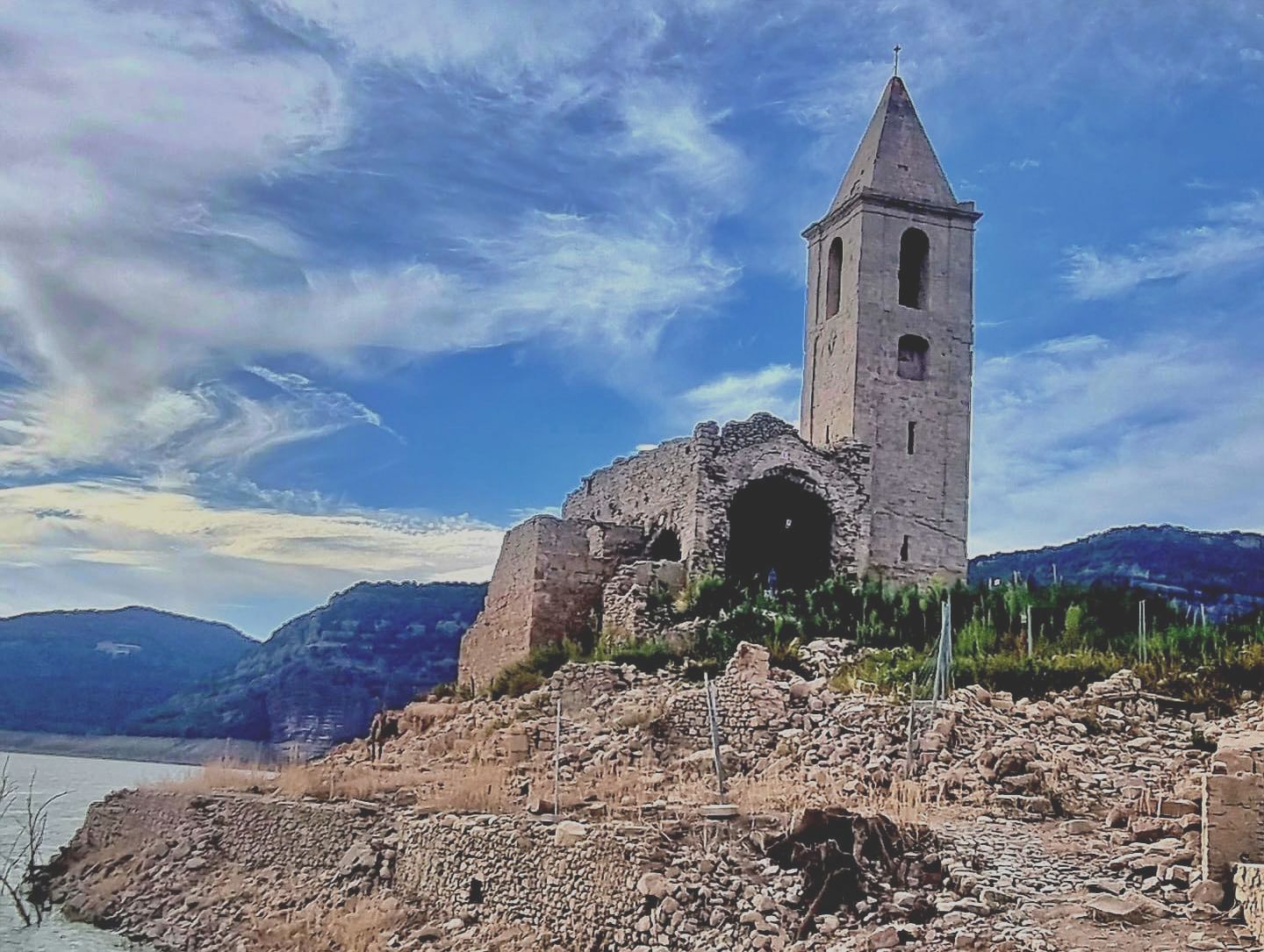
Sant Roma de Sau, Spain 11th-century church reemerges from the water
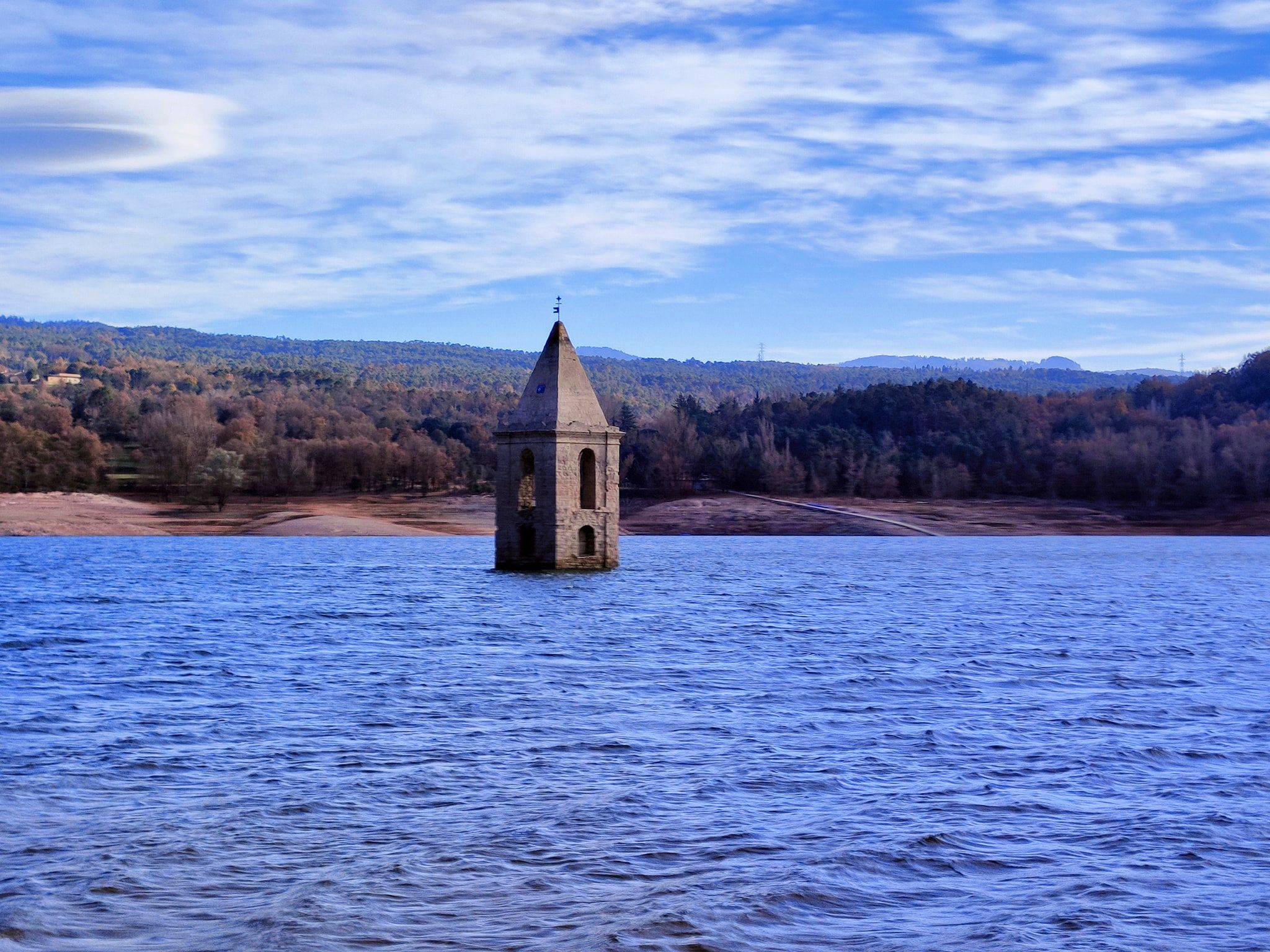
However, among the negative news about the drought, some positive news has arrived. People can now visit the 11th-century church in Sant Roma de Sau which has been underwater in a reservoir for 60 years. The serious drought and its results are drawing what are termed “drought tourists” to the town from all over the world to visit the small church.
Creation of the Sau reservoir
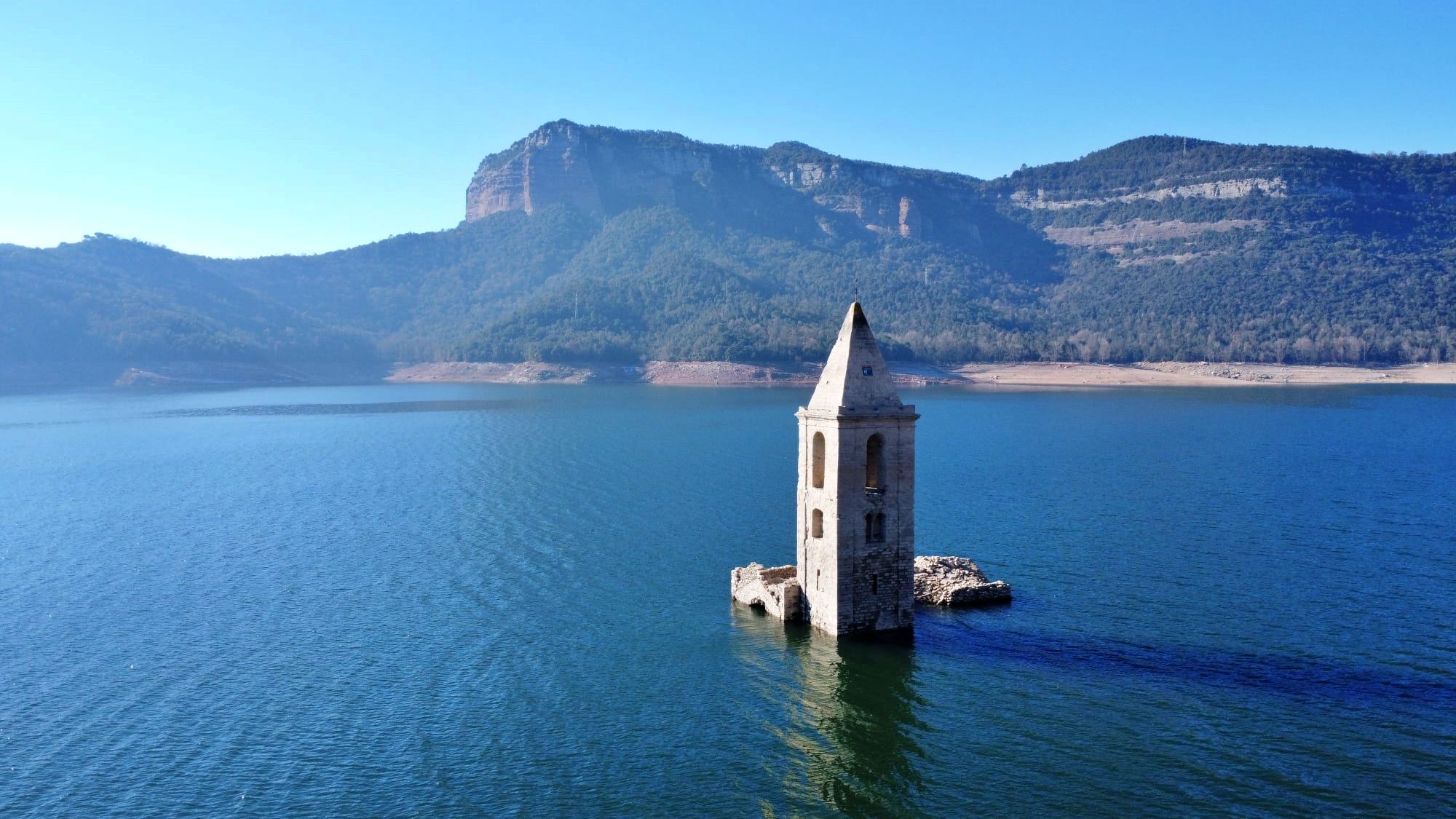
When the reservoir is full, only the church’s three-story steeple stands out above the surface of the water. However, with the drought, the entire church gradually emerged from the water. Meanwhile, it now stands firmly on dry land, waiting to be visited, and curious tourists have been pouring in for the experience.
Euro Weekly News quotes a local resident Sergio Iberico, who regularly visits the reservoir, as saying:
It’s unbelievable how much the water level has gone down. I remember paddling here and the water level was at the window of the church tower.
However, in January 2023, the water levels in the Sau reservoir stood at 19 percent, which was bad enough. Fast forward to January 2024, and the current water level of the reservoir is a mere 6 percent of capacity. This stands as a stark reminder of the drought Spain is going through right now.
A good time to visit Spain in the drought
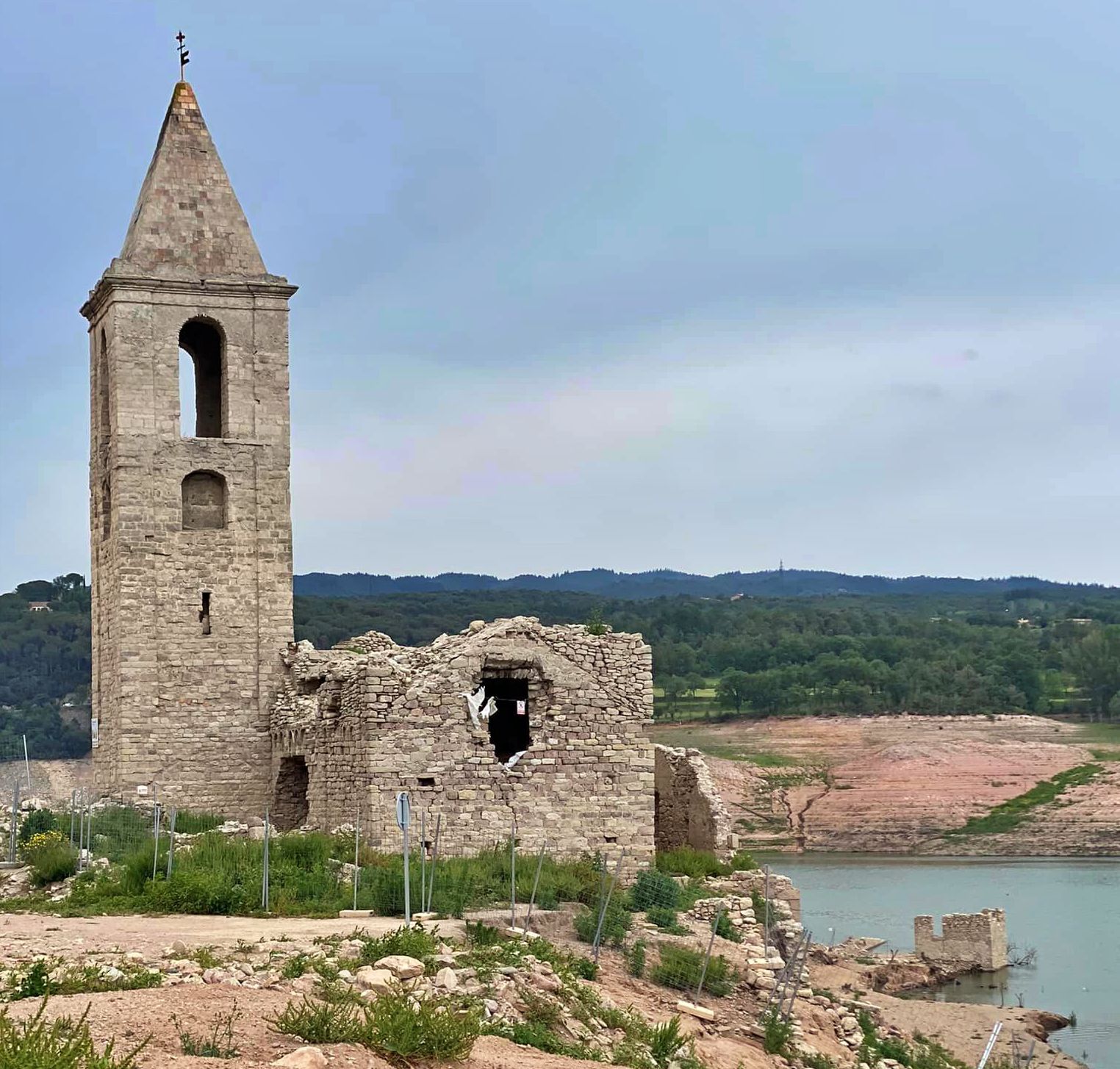
Another positive aspect for travelers is that many parts of Spain are relatively warm and sunny during the drought. This gives a chance to visit the country at an affordable time of year and without too many fellow tourists.
If visiting the city of Barcelona, Sant Roma de Sau is a 1 hour 48 minute drive from the city on the C-17 highway.
Read more news and travel articles about Spain here.


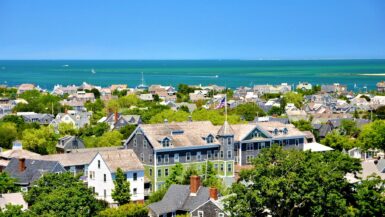

[…] an intense and eerie atmosphere. While no one knows if the legends are true, it is said that the Spanish Inquisition sent witch hunters to the town. Reportedly, the hunters found around 7,000 likely […]